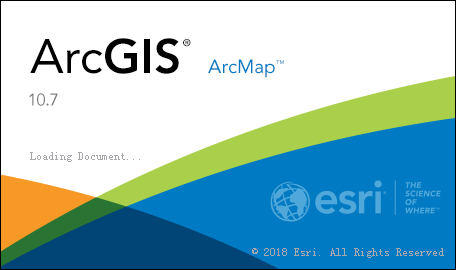What is GIS or Geographic Information System
Definition of GIS/ What is GIS
Definition of GIS can be summed up as follows:
GIS stands for Geographic Information Systems and is a computer-based tool that examines spatial relationships, patterns, and trends in geography.- Geographic Information Systems (GIS) store, analyze, and visualize data for geographic positions on Earth’s surface.
- Geographical Information System (GIS) is a computer based information system used to digitally represent and analyze the geographic features present on the Earth’s surface and the events that taking place on it.
- Geographic Information Systems provide a method for integrating and analyzing spatial (digital map based) information such as "where is the nearest Hospital?"
- Alongside related non-spatial information (what services are given there?).
- Many people are becoming far more familiar with seeing the results both textually - for example when their phone shows them the nearest Hotel - and on open map systems such as Google Maps.
- Location: What is at a particular location...? Where is it….?
- Condition: identify a location where certain conditions exist..?
- Trends: What has changed since...?
- Patterns: What things are related..?
- Modeling: What if…?
- The real world has a lot of spatial data
- Manipulation, analysis and modeling can be effective and efficiently carried out with a GIS.
- The neighborhood of the intended purchase of house
- location of historical sites to visit
- The earth surface is a limited resource
- Rational decisions on space utilization
- Fast and quality information in decision making
 |
| Cross Disciplinary nature of GIS/Relation of GIS with Other Disciplines |
If you want to use already existed maps which are not in digital form, but in a form that can be recognized by computer can be used in GIS by converting them into Digital form so that they can be used.
Maps can be digitized by hand-tracing with a computer mouse on the screen or on a digitizing tablet to collect the coordinates of features.
Electronic scanners can also convert maps to digits.
2. Photogrammetry :-
Photogrammetry is art, science, and technology of obtaining the geometric properties (of shape, size relative position of figures, and the properties of space) of objects from photographic images. Photogrammetry is as old as modern photography.
Surveying or land surveying is the technique, profession, and science of accurately determining the three-dimensional position of points and the distances and angles between them (relative position of points or physical and cultural details).
These points are usually on the surface of the Earth, and they are often used to establish
land maps, boundaries for ownership or governmental purposes and cultural details about the area or land.
Remote sensing is the technique of deriving information about objects on the surface of the earth without physically coming into contact with them but with the help of sensors like cameras scanners carried on airplanes, satellites.
These sensors collect data in the form of images.
These sensors are at a considerable height from the earth surface and recording the observations on a suitable medium (images on photographic films and videotapes or digital data on magnetic tapes).
There are many different designs of DBMS’s, but in GIS the relational design has been the most useful.
In the relational design, data are stored conceptually as a collection of tables. Common fields in different tables are used to link them together.
Spatial relational databases
- Exactly the same as any other relational database (RDBS) except that at least some of the tables consist of entities with a geographic location.
- Place name, longitude, latitude, Pin code, description..etc.
CAD is an automated system for the design, drafting and display of graphically oriented information.
CAD is used with GIS and the benefit is CAD allows a user to create a very accurate drawing whether it is a map, site plan, profile, etc. All the above defined systems are used with GIS to make it more efficient.
Courtesy:
Analysis with GIS, basics of GIS, Definition of GIS, fundamentals of GIS, Geography handnotes, GIS, The Need for GIS, what is GIS
Comments
Post a Comment